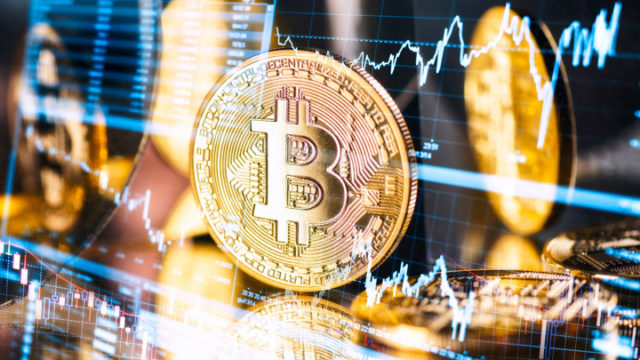- Sterling jumps to 1.2670 amid uncertainty over BoE rate cuts and US Dollar weakness.
- Sustained wage growth in the United Kingdom heightens fears that inflationary pressures will persist.
- The US dollar weakens further following the expected decline in April inflation data in the United States.
The British Pound (GBP) records a new monthly high at 1.2670 against the United States Dollar (USD) in the American session on Wednesday. The GBP/USD pair soars as the US Dollar has been hit hard by the expected decline in the US Consumer Price Index (CPI) and stagnant April retail sales data. The US Dollar Index (DXY), which tracks the value of the dollar against six major currencies, falls sharply to near 104.50.
Monthly headline inflation rose at a slower pace of 0.3% from estimates and the previous reading of 0.4%. The core CPI, which strips out food and energy price volatility, slowed in line with estimates, at 0.3%, down from 0.4% previously. As expected, the annual headline CPI and core CPI softened to 3.4% and 3.6%, respectively. Monthly retail sales data, which is an indicator of household spending and can also provide clues about inflation prospects, remained unchanged. However, investors forecast that the economic data would have grown at a slower pace of 0.4% from the previous reading of 0.6%, revised down from 0.7%.
Soft inflation data is expected to positively influence speculation about interest rate cuts by the Federal Reserve (Fed). Currently, financial markets expect the Fed to choose the September meeting as the time to start lowering interest rates.
Daily summary of market movements: Sterling recovers after US CPI decline
- The pound sterling extends its bullish streak for the third consecutive session. The Cable takes advantage of the weakness of the US Dollar and the uncertainty over when the Bank of England (BoE) will choose to cut interest rates. Investors currently expect the central bank to begin doing so as early as its June meeting.
- The UK employment report for the three months to March, released on Tuesday, indicated that labor market conditions deteriorated for the third time in a row. Due to the increase in unemployment, the unemployment rate rose to 4.3%, as expected. Historically, easing labor market conditions raise expectations that the central bank will take a dovish stance on interest rates. However, the impact of this labor market relaxation was offset by continued wage growth.
- BoE officials remain concerned about high services inflation, which could slow the disinflation process. Services inflation is driven primarily by wage growth, which appears to be significantly stronger than necessary to bring inflation back to the desired rate of 2%.
- Following the labor market data, BoE Chief Economist Huw Pill commented: “Wage growth rates remain well above what would be consistent with achieving the 2% inflation target on a sustainable basis” Pill emphasized the need to maintain a restrictive stance in monetary policy that continues to generate downward pressure on national inflation. On rate cuts, Pill said it is reasonable to believe that over the summer, “we will see enough confidence to consider lowering interest rates.”
Technical analysis: Sterling rises to 1.2670

The British pound extends its uptrend and reaches a monthly high at 1.2670. The GBP/USD pair strengthened after stabilizing above the main resistance drawn from the December 8 low at 1.2500. Cable's short-term outlook has improved as it appears to consolidate above the 20-day EMA, which is trading around 1.2540. The pair has recovered 61% of the losses recorded from the 10-month high around 1.2900.
The 14-period RSI is gradually approaching the barrier of 60.00 points. A decisive break above this level will trigger bullish momentum.
Inflation FAQ
Inflation measures the rise in prices of a representative basket of goods and services. General inflation is usually expressed as a monthly and annual percentage change. Core inflation excludes more volatile items, such as food and fuel, which can fluctuate due to geopolitical and seasonal factors. Core inflation is the figure economists focus on and is the target level of central banks, which are mandated to keep inflation at a manageable level, typically around 2%.
The Consumer Price Index (CPI) measures the variation in prices of a basket of goods and services over a period of time. It is usually expressed as a percentage of monthly and annual variation. Core CPI is the target of central banks as it excludes food and fuel volatility. When the underlying CPI exceeds 2%, interest rates usually rise, and vice versa when it falls below 2%. Since higher interest rates are positive for a currency, higher inflation usually translates into a stronger currency. The opposite occurs when inflation falls.
Although it may seem counterintuitive, high inflation in a country drives up the value of its currency and vice versa in the case of lower inflation. This is because the central bank typically raises interest rates to combat higher inflation, attracting more inflows of global capital from investors looking for a lucrative place to park their money.
Gold was once the go-to asset for investors during times of high inflation because it preserved its value, and while investors often continue to purchase gold for its safe haven properties during times of extreme market turmoil, this is not the case. most of the time. This is because when inflation is high, central banks raise interest rates to combat it. Higher interest rates are negative for Gold because they increase the opportunity cost of holding Gold versus an interest-bearing asset or placing money in a cash deposit account. Conversely, lower inflation tends to be positive for Gold as it lowers interest rates, making the shiny metal a more viable investment alternative.
Source: Fx Street
I am Joshua Winder, a senior-level journalist and editor at World Stock Market. I specialize in covering news related to the stock market and economic trends. With more than 8 years of experience in this field, I have become an expert in financial reporting.







